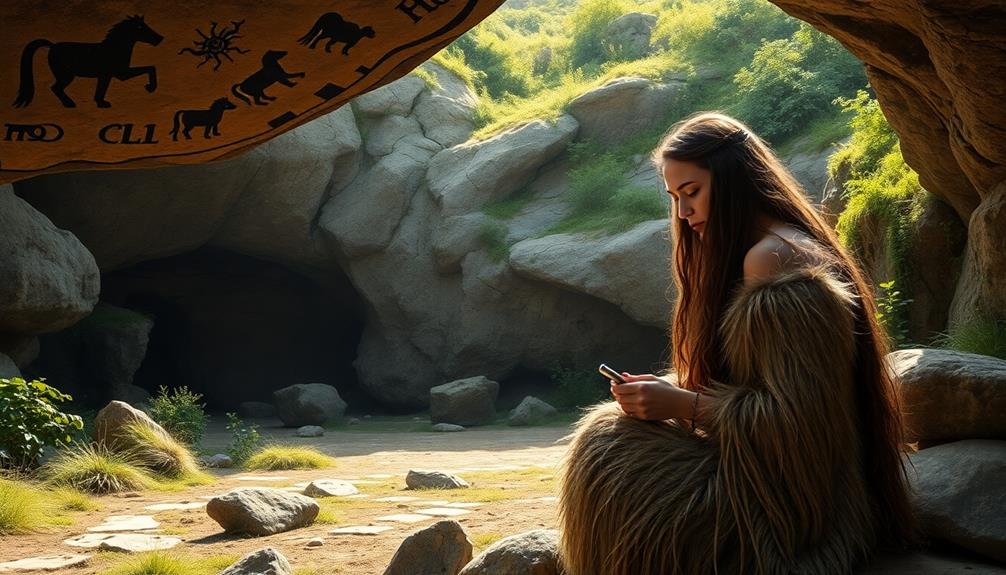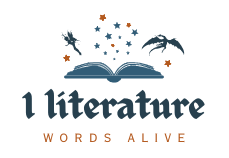You'll find that "The Clan of the Cave Bear" was penned by Jean M. Auel, a remarkable author who reshaped historical fiction. Published in 1980, it's the first book in her Earth's Children series, which has captivated over 45 million readers globally. Auel's vivid storytelling brings to life Ayla, a young Cro-Magnon girl maneuvering life with a Neanderthal clan. As Auel explores themes of survival, adaptation, and gender roles, her work challenges established norms and invites deep reflection. Stick around, and you'll uncover more fascinating details about Auel's impact on literature and the journey of her unforgettable characters.
Background of the Author
Jean M. Auel was born on February 18, 1936, in Chicago, Illinois. After raising five children, you'll find that she pursued writing, earning a master's degree in business administration in 1976.
Auel is best known for her Earth's Children series, which kicked off with the publication of "The Clan of the Cave Bear" in 1980. This novel dives into the lives of prehistoric peoples, focusing on the interactions between Cro-Magnons and Neanderthals, and reflects the resilience of the human spirit, much like the story of Louis Zamperini in his survival tale.
To guarantee historical accuracy in her portrayal of prehistoric life, Auel conducted extensive research on Ice Age Europe, collaborating with anthropologists and archaeologists. Her dedication to realism shines through in her work, making it resonate with readers.
The success of "The Clan of the Cave Bear" led to the publication of five additional novels in the series, culminating with "The Land of Painted Caves" in 2011.
With over 45 million copies sold worldwide, Auel's influence on the genre of historical fiction is undeniable, particularly in the domain of prehistoric narratives. Through her meticulous attention to detail, she's created a lasting legacy that continues to captivate readers.
Overview of the Novel
Set in the harsh realities of the Upper Paleolithic era, "The Clan of the Cave Bear" introduces you to Ayla, a young Cro-Magnon girl whose life takes a dramatic turn after losing her mother in an earthquake.
Left orphaned, she's adopted by a Neanderthal clan, which thrusts her into a world of survival and cultural challenges. The story intricately explores the clash between Ayla's Cro-Magnon traits and the clan's Neanderthal customs, emphasizing the struggle for acceptance within their rigid social structure.
This conflict mirrors the broader themes of generational poverty and resilience found in immigrant narratives, highlighting the universal quest for identity amidst adversity.
As Ayla learns to navigate the clan's way of life, she faces the limitations imposed on women, who are expected to be submissive.
The novel captures her journey of adaptation, showcasing her resilience and intelligence as she communicates in non-verbal ways. You witness her growth as she becomes a bridge between two worlds—reflecting the prehistoric era's complexities.
Jean M. Auel masterfully weaves a narrative that not only entertains but also invites you to contemplate the essence of identity and belonging, making "The Clan of the Cave Bear" a significant cornerstone in prehistoric fiction.
Themes and Cultural Insights

In "The Clan of the Cave Bear," you'll encounter powerful themes of survival and adaptation as Ayla navigates her new life among the Neanderthals.
Her struggles with cultural integration highlight the challenges of fitting into a society bound by strict gender roles and dynamics.
Through Ayla's journey, you get a vivid look at the complexities of prehistoric life and the transformative power of innovation.
Survival and Adaptation
During the harsh realities of the Paleolithic era, survival hinges on adaptability, a theme vividly illustrated in "The Clan of the Cave Bear." Ayla's journey reveals how resourcefulness can challenge traditional norms, particularly as she navigates the cultural divide between Cro-Magnons and Neanderthals. After losing her family, she faces formidable challenges that test her survival instincts and capacity for adaptation.
Ayla exemplifies innovation, introducing new hunting methods and tools that contrast sharply with the established practices of her Neanderthal clan. Her skills not only enhance survival but also challenge the rigid gender roles and social structures that dictate the clan's identity. As she forages and masters flint knapping, she embodies a transformative force, reshaping how the group perceives capabilities and roles.
Moreover, Ayla's emotional and social adaptation plays an essential role in her journey. She gradually earns acceptance within the clan while confronting prejudice and societal norms that seek to suppress her individuality.
Through her story, Auel highlights the importance of adaptation in overcoming adversity and finding one's place in a complex world, making Ayla a powerful symbol of resilience and identity.
Cultural Integration Challenges
Cultural integration challenges are central to Ayla's journey in "The Clan of the Cave Bear," as her Cro-Magnon origins clash with the established norms of her Neanderthal clan. These challenges manifest in various ways, driving the narrative forward and highlighting the struggle for acceptance in a rigid social structure.
- Ayla's independent spirit threatens the clan's male-dominated hierarchy.
- Communication barriers complicate her efforts to connect with clan members.
- The animosity from figures like Broud underscores her outsider status.
Iza, the clan's medicine woman, becomes a pivotal figure in Ayla's integration, nurturing her unique abilities while bridging the cultural divide. Through Iza's guidance, Ayla learns to navigate the complexities of Neanderthal traditions.
Yet her innovative approaches to survival often disrupt established norms. As she introduces new hunting techniques and gathering methods, Ayla challenges the clan's identity, forcing them to reevaluate their beliefs and practices.
Ultimately, Ayla's journey isn't just about personal survival, but also about redefining what it means to belong to a clan. Her story is a profound exploration of cultural integration, resilience, and the quest for acceptance in a world that often resists change.
Gender Roles and Dynamics
Ayla's struggle for acceptance highlights the rigid gender roles that permeate the Neanderthal clan in "The Clan of the Cave Bear." With men dominating the social structure, women are expected to be obedient and serve the needs of their male counterparts. Ayla's unique abilities and independence challenge these patriarchal constraints, creating tension, especially with Broud, who resists change.
As you read, you'll notice how the narrative contrasts Ayla's innovative spirit against the clan's strict adherence to established gender norms. This cultural clash between her Cro-Magnon identity and Neanderthal traditions illustrates the tension between individualism and conformity.
Female characters like Iza, the clan's medicine woman, showcase the complexities of female solidarity, nurturing Ayla while maneuvering their roles in clan life.
Additionally, the portrayal of sexuality in the novel reflects both a natural aspect of prehistoric life and raises critical questions regarding consent and agency within the context of these gender roles. Through Ayla's journey, Auel invites you to reflect on how deeply ingrained societal expectations impact personal identity and relationships, making it evident that the struggle against gender roles resonates across time and cultures.
Character Analysis
In "The Clan of the Cave Bear," character dynamics vividly illustrate the struggles and triumphs of identity amidst societal constraints. You see Ayla, a resourceful Cro-Magnon girl, maneuvering her complex position within the rigid Neanderthal clan. Her journey is shaped by significant relationships that highlight her resilience and adaptability, much like Tita's emotional journey in forbidden love challenges, where individual desires clash with societal expectations.
- Iza, the nurturing medicine woman: She embodies maternal support, healing Ayla physically and emotionally, showcasing their deep bond.
- Creb, the crippled shaman: As Ayla's mentor, he encourages her unique abilities, challenging the clan's norms and supporting her integration despite pushback.
- Broud, the antagonist: Representing male dominance, he often acts as a foil to Ayla, amplifying the societal power struggles that threaten her acceptance.
Uba, a clan member, grapples with Ayla's differences, reflecting the internal conflicts within the clan. Each character plays a vital role in shaping Ayla's identity, emphasizing the tension between tradition and change as she seeks her place in a world that often resists her existence.
Through these interactions, you witness the profound impact of acceptance, mentorship, and rivalry on personal growth.
Reception and Criticism

Reception to "The Clan of the Cave Bear" has sparked diverse opinions among readers and critics alike. With an average rating of 4.09 based on nearly 272,000 ratings, you can see that both appreciation and criticism coexist.
While some readers laud the book's originality and the ambitious historical setting, others question its historical accuracy and narrative style. Critics often highlight the excessive descriptive passages that can feel repetitive, especially in the later books of the series.
Similar to the complex themes of love and resilience found in David Copperfield, the themes explored in Auel's work, such as sexual trauma and gender roles, have been praised for their complexity. However, some argue that Auel's anthropological approach can come off as heavy-handed, detracting from the story's flow. You might find that the awkward prose also detracts from the overall experience, leading to mixed feelings about the writing quality.
Despite these criticisms, "The Clan of the Cave Bear" has maintained a devoted following, attracting new readers decades after its initial release.
This enduring curiosity about its characters and themes reflects the book's impact on the historical fiction genre, even if some aspects have been deemed repetitive or drawn out in subsequent installments.
Legacy and Influence
Jean M. Auel's *The Clan of the Cave Bear* reshaped historical fiction by bringing prehistoric life vividly to life, enchanting millions.
Its exploration of gender roles and societal structures sparked feminist discussions that resonate in literature today.
The novel highlights the resilience and intelligence of its female protagonist, Ayla, showcasing how women can defy societal expectations and shape their destinies.
As you consider Auel's influence, you'll see how her work not only entertains but also challenges traditional narratives, encouraging readers to appreciate the untold narratives of courageous women throughout history.
Impact on Historical Fiction
*The Clan of the Cave Bear* revolutionized the historical fiction genre, drawing readers into a vivid world of prehistoric life. Its impact is undeniable, influencing how stories are told about human evolution and complex societies. You can't help but feel the excitement that comes with exploring themes of survival and cultural differences.
Here are three key ways Auel's work has shaped the genre:
- Popularization of Prehistoric Narratives: Auel made prehistoric Europe accessible and fascinating, sparking interest in anthropology and archaeology.
- Meticulous Research Standards: Her extensive research into the Ice Age set a benchmark for authenticity, encouraging other authors to dive deep into their subjects.
- Character-Driven Storytelling: The rich character development in her six-part series has inspired countless writers to focus on emotional depth and tension.
Auel's dedication to character-driven storytelling has opened doors for future authors to craft narratives that resonate on multiple levels, ensuring her legacy endures.
Readers today still find themselves captivated by the intricate dynamics of early human societies, thanks to her groundbreaking work.
Feminism in Literature
Ayla, the strong female protagonist of *The Clan of the Cave Bear*, embodies the spirit of resilience and empowerment that challenges traditional gender roles. Through her journey, you witness how she defies societal expectations in a male-dominated world, showcasing feminist ideals that emphasize female empowerment and autonomy.
Auel's rich narrative and detailed character development invite you to explore the complexities of gender dynamics in a prehistoric setting. As you read, you'll see how Ayla's struggle for acceptance within the Neanderthal clan reflects broader themes of female representation in historical fiction.
Auel's work not only highlights the capabilities of women but also serves as a catalyst for discussions about gender equality. The novel's success has inspired future authors to investigate feminist themes within various contexts, shaping literary narratives that prioritize diverse voices and perspectives.
Ultimately, *The Clan of the Cave Bear* leaves a lasting legacy, influencing how women's experiences are portrayed in literature. You'll find that Ayla's story resonates well beyond its pages, contributing greatly to ongoing conversations about female empowerment and the evolution of gender dynamics.
Conclusion
In the end, "The Clan of the Cave Bear" isn't just a story about survival; it's a journey through the caverns of human connection and resilience. Jean M. Auel's masterful storytelling lets you wander alongside Ayla, discovering your own strengths and vulnerabilities. Just as Ayla finds her place in a world of stark contrasts, you too can navigate your own challenges, carving out a path that honors both your roots and your unique spirit.



